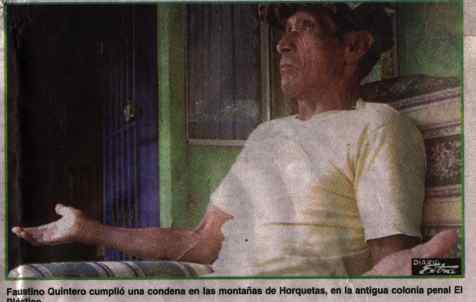

In 1940 Dr. Rafael Calderón Guardia became president of Costa Rica. At this time the socialist movement was very strong, as was the communist party, lead by Manuel Mora Valverde who, in 1931, was a founding member of the Worker's and Farmer's Party. In order to avoid a civil war President Calderon decided to negotiate with Señor Mora. So Manuel Mora, the Archbishop of the Catholic Church, and Dr. Rafael Calderón sat down together at an historic meeting to try to reach an agreement, which they eventually did. Part of the agreement was as follows: 1) Mora was not to call his party the communist party (what the church wanted); 2) Important social changes were to be enacted (what Mora wanted, which included the establishment of the social security system); and 3) the precursor to the Acción Nacional de Trabajo (ANT) was formed (what the government and powers-that-be wanted). This compromise stated that all the land between Rio Sucio and the Sarapiqui could not be homesteaded in the traditional way. Instead, it would be sold through a land association, which was established for that purpose. A contract was then signed between members of the association (Docters, lawyers and other well-to-do people) and the Costa Rican government, and in 1943 the land (20,000 hectares) was divided into lots to be sold to campesinos. However, for a long time nothing happened.
In 1962, Chico Orlich was elected president. At that time his brother was the president of ANT. So in 1963 ANT was re-activated and a way was figured out how to sell the land in lots. One large piece of the original concession was leased back to the government to be used as a site for a new Penal Colony.
The Penal Colony was established in 1963 on the site of what is today Selvatica. Its 2 main objectives were to develop a cattle ranch and to alleviate the congestion in prisons in the Central Valley by transferring low-security prisoners to "El Plastico".
So in 1963 the first prisoners were brought from San Jose overland to a place called Magsasay, which was about 20 kilometers from Selvatica. Magsasay, which was also a prison at the time, was the beginning of the "Sendero de los Reos", or the Prisoners Trail. From Magsasay a tractor was used to rough grade a road up to "El Plástico". However, it only made it as far as the Guacimo River. From there (about 4 km) the prisoners had to arrive on horseback or on foot.
When the prisoners first arrived, they built a shelter to protect themselves from the elements. The shelter had a wooden frame and rafters, but because the prisoners had no tin roofing material, they used plastic sheets to cover the roof. Tin roofing material was eventually brought in on horseback, but for ever after the camp area was known as "El Plástico".
The prisoners were then divided into 3 groups. One group cut the understory, another felled trees with axes, while a third planted grass by sowing seeds. Soon after the grass was established, 40 head of cattle were brought in. The total amount of land cut and turned into pasture totaled approximately 200 hectares (from the pasture that exists today heading downhill toward Guápiles). Vegetables, dry goods and can goods were brought in on horseback. There was plenty of meat, provided for by hunting. The prisoners hunted brocket deer, agoutis, paca, peccaries (white-lipped and collared), crested guan, and tinamou, to name just a few. The number of prisoners in "El Plástico" never totaled more than 50. They earned 13 colones a week (about $2). Also, for every 1 day worked, 2 days were subtracted from their sentence.
The first building constructed was "La Casita", which was used for lodging prisoners who came over from the original camp site. The second building was where the "Aula" (classroom) is today. It was used as a kitchen and dining room. The last of the 3 buildings, which is where the building called "El Plástico" is now located, was used by the warden, José María Rojas, also known as "El Comandante".
In 1964 the town of Horquetas was established. Horquetas is located approximately 13 km to the Northeast of "El Plástico" at an elevation of about 60 meters. The first 2 buildings built in Horquetas were a bar and a whorehouse. Soon after a trail was established between Horquetas and "El Plástico". By the time the prison was abandoned in 1967, most goods were being transported via Horquetas, rather than through Magsasay.
"El Plástico" was abandoned from 1967 until 1970, when Eladio Lopez homesteaded the land. In 1980 he tried to gain title the land, so ANT took him to court. ANT won the court battle and acquired title to the land. Shortly thereafter a lumber company called Aseraderos Unidos bought the land from ANT to establish "tree plantations" in the area. Of course in order to establish plantations they would first have to have cut the old-growth forest. Thankfully, because of the united efforts of a handful of conservationists, the clear-cutting of the virgin forests never occurred. Although Asseraderos Unidos "high-graded" some of the more accessible areas, the majority of the old-growth forests have been conserved forever.